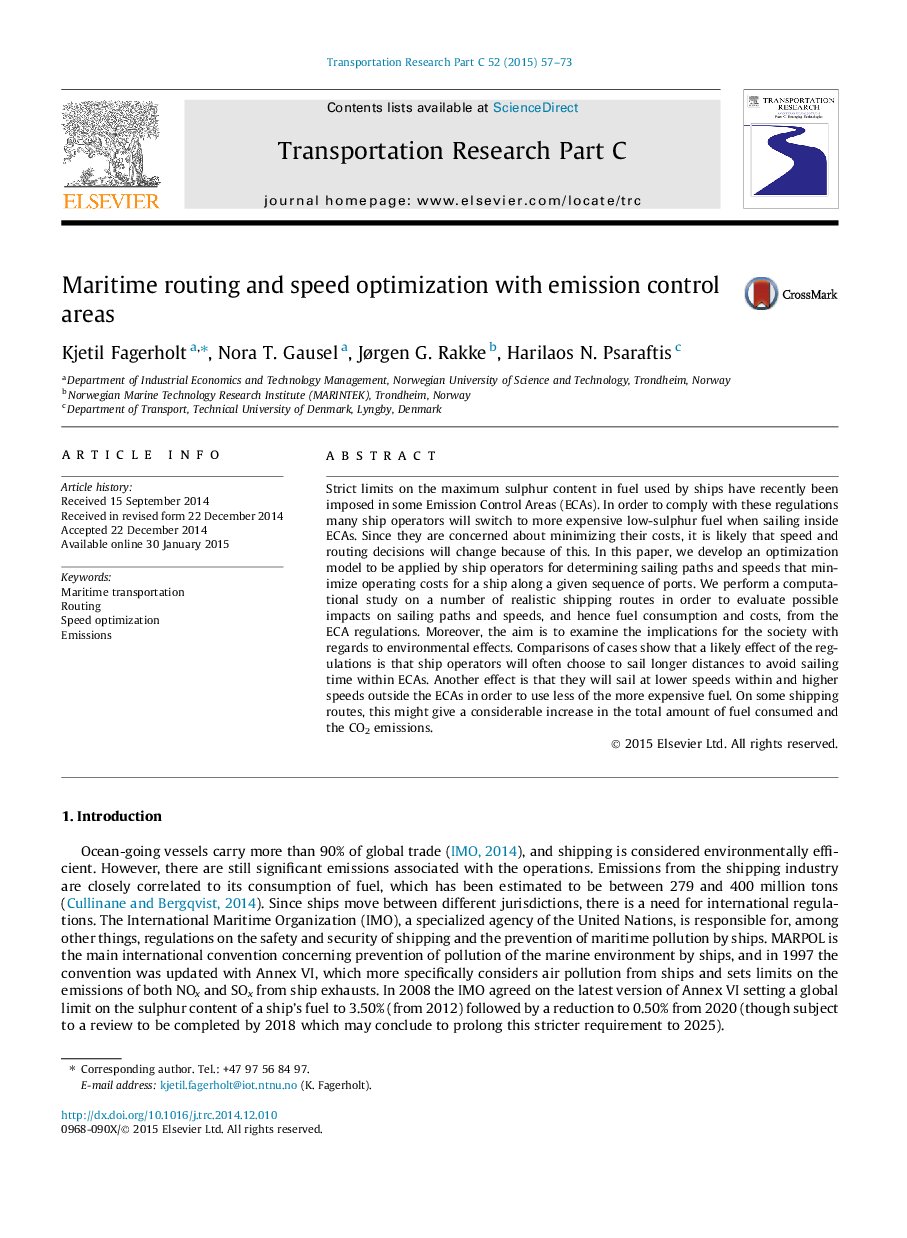| Article ID | Journal | Published Year | Pages | File Type |
|---|---|---|---|---|
| 525044 | Transportation Research Part C: Emerging Technologies | 2015 | 17 Pages |
•Mathematical model for sailing path and speed optimization in the case of ECAs.•Computational study on a number of realistic shipping routes.•Shipping companies will adapt to the ECAs by choosing longer sailing routes.•Introduction of ECAs might give an increase in fuel consumption and CO2 emissions.
Strict limits on the maximum sulphur content in fuel used by ships have recently been imposed in some Emission Control Areas (ECAs). In order to comply with these regulations many ship operators will switch to more expensive low-sulphur fuel when sailing inside ECAs. Since they are concerned about minimizing their costs, it is likely that speed and routing decisions will change because of this. In this paper, we develop an optimization model to be applied by ship operators for determining sailing paths and speeds that minimize operating costs for a ship along a given sequence of ports. We perform a computational study on a number of realistic shipping routes in order to evaluate possible impacts on sailing paths and speeds, and hence fuel consumption and costs, from the ECA regulations. Moreover, the aim is to examine the implications for the society with regards to environmental effects. Comparisons of cases show that a likely effect of the regulations is that ship operators will often choose to sail longer distances to avoid sailing time within ECAs. Another effect is that they will sail at lower speeds within and higher speeds outside the ECAs in order to use less of the more expensive fuel. On some shipping routes, this might give a considerable increase in the total amount of fuel consumed and the CO2 emissions.
